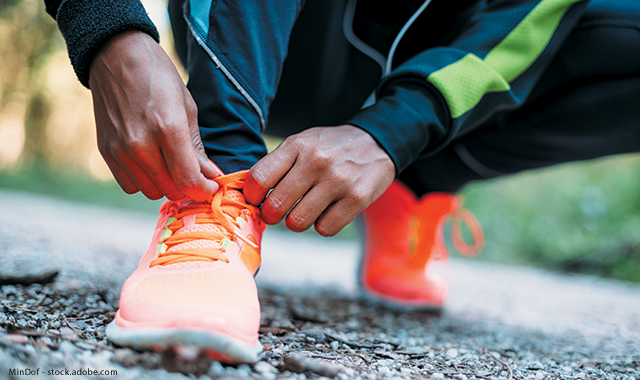Aerobic exercise a greater benefit for dental professionals
Particular exercises may relieve certain physical complications from dental practice.

Exercise regimens should differ slightly depending upon your age. As we grow older, we tend to lose more muscle mass. Therefore, people under age 50 should consider an exercise regimen that consists of a higher percentage of aerobic exercise and smaller percentage of strength training. After age 50, the percentage of time spent strength training should be greater than aerobic exercise.
Studies show that a regular aerobic exercise regimen:
- makes your body more efficient at healing microtrauma that occurs day-to-day in your operatory
- can decrease painful muscle ischemia by improving blood, oxygen and nutrient flow to working muscles
- helps the body cope with anxiety/mental stress
- increases brain volume
- prevents musculoskeletal dysfunction
- improves memory
- decreases mortality from heart-related disease
- helps with weight loss
- decreases depression
- helps manage diabetes, pregnancy and aging
To be considered aerobic, an exercise must utilize oxygen to maintain a heart rate for a prolonged period of time through rhythmic and regular joint movement of the large muscle groups. The three primary goals of an aerobic conditioning program are to:
- improve efficiency of the heart and lungs,
- develop functional capacity of central circulation
- increase blood flow to the working muscles
In addition, aerobic exercise may decrease muscle imbalances of the neck and shoulders by encouraging correct use of the diaphragm and other primary respiratory muscles while maintaining excellent posture during exercise. Proper diaphragmatic breathing will help relax scalene and anterior neck musculature with aerobic activity.
Dental professionals should keep in mind two important guidelines when selecting their aerobic activities:
- The ideal aerobic exercises for dental professionals are those that keep the body symmetrical and don't allow worsening of existing imbalancesthat can develop in the operatory. Exercises that require hunching forwardor repeatedly twisting in one direction can easily worsen your existing muscle imbalances and have a negative impact on musculoskeletal health (i.e. kayaking, crawl stroke, golf, bicycling, and tennis). However, Dr. Valachi has developed corrective therapeutic exercises for dentists who enjoy the previously mentioned activities, so you can safely continue those sports you love! These exercises are included in Dr. Valachi’s Well Body System for Dental Professionals.
- Pick at least one aerobic activity that aerobically exercises your upper trapezius muscles. These muscles are prone to tightness & ischemia in dentistry so will benefit from aerobic-type activity. Due to the anaerobic nature of trapezius myalgia (that is so pervasive in dentistry), strength training on the upper trapezius muscles is something to avoid, as it can easily worsen neck and shoulder pain
There are many good exercises that activate the upper trapezius muscles
- Cross-country skiing is one of my favorite aerobic exercises for dental professionals. It doesn't allow for muscle compensation, while providing a wonderful aerobic workout for two muscles prone to developing trigger points in dentistry: the upper trapezius and iliopsaos (hip flexor) muscles.
- Skate skiing is the new 'phenom' in winter sports. It is similar to cross country skiing, but with shorter skis, longer poles and a movement more like ice skating--a real leg workout!
- If you live in an area that doesn't see much snow, consider an alternative exercise that moves your body in a similar manner, such as Nordic Track, elliptical machine, rowing machine or, for an outdoor workout, consider Nordic Blading.
- Brisk walking while swinging the arms during lunchtime is a good option as well, and has been shown to help prevent low back pain. Aerobic exercise should be performed 3-4X/week for at least 30 minutes.
Strength training is an especially important component of exercise programs for dental professionals over the age of 50. However, you should ensure you are strengthening the correct muscles, and not worsening the muscle imbalances to which dental professionals are uniquely predisposed. Read more about a customized strengthening program developed specifically for dental professionals.